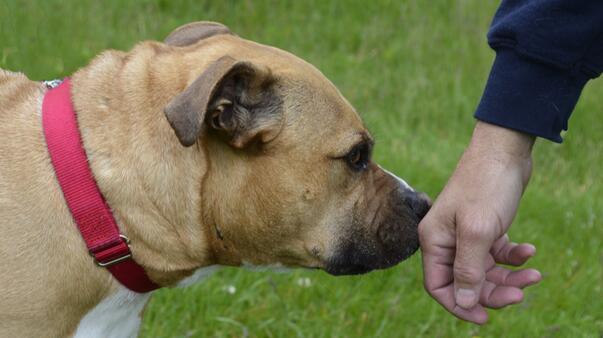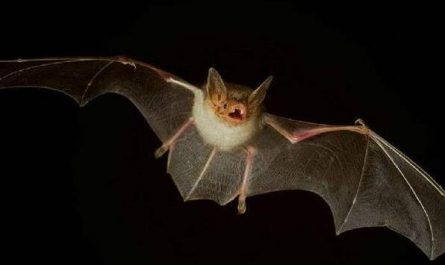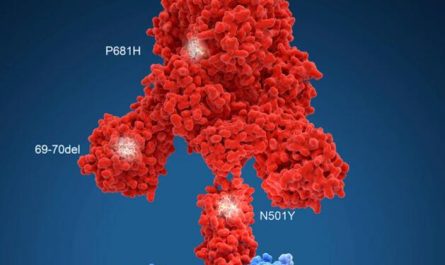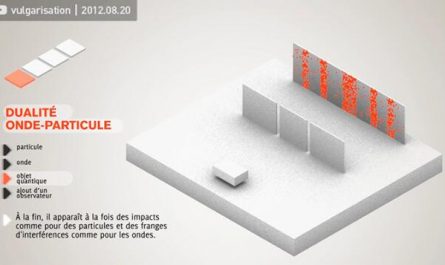According to foreign media reports, time is fast forward to 2050. It’s time for your monthly medical examination. But times have changed. You no longer need to endure various tests, take blood tests, and then wait another week for your blood test results. Instead, at this time, the nurse will tell you: “The doctor can sniff you.” Then, the nurse will take you to a closed room connected to a large computer.
During your break, the volatile molecules that you exhale or release from your body or skin will slowly drift into the complex artificial intelligence device, commonly known as “deep nose.” Out of sight, the giant electronic brain of the deep nose will begin to process these molecules and compare them with the vast amounts of data in the olfactory database. After you have “sniffed” enough, the artificial intelligence will match your scents with the medical conditions that formed these scents and generate your health report. Then, your human doctor will explain the report to you and make a treatment plan or adjust your medication for you.
This is a possible future medical scenario envisioned by researcher Alexei Krakow. Krakow was originally a physicist and later became a neuroscientist. Now he specializes in the workings of the human olfactory system at the Cold Spring Harbor Laboratory. Krakow is committed to figuring out how humans perceive odors and classifying millions of volatile molecules based on the “smellable” characteristics of odors. He plans to classify existing smells and build a complex artificial intelligence network called “Deep Nose”.
Once the deep nose is built, it will be able to identify human scents or any other smells of interest for medical or other purposes. Krakow said: “This will be a chip that can diagnose or identify you.” The smell can uniquely identify a person or product, so Deep Nose can also assist the Border Patrol to sniff people, goods or explosives in transit. At that time, you don’t need to show your passport at the airport, just ‘show’ yourself. “In addition, the doctor’s consultation will become easier.
Peer-reviewed studies have shown that well-trained dogs can detect the characteristic odors of many diseases, including cancer and tuberculosis. But in the long run, a “sniffing” computer will be more cost-effective. Peer-reviewed studies have shown that well-trained dogs can detect the characteristic odors of many diseases, including cancer and tuberculosis. But in the long run, a “sniffing” computer will be more cost-effective.
How much health information can a person smell? Obviously, smell can reveal a lot of information. Dmitry Limberg, a former physicist and now a neurobiologist at New York University, said: “The information that can be obtained from air molecules is extremely rich.” Limberg and Krakow collaborate on olfactory research. He said: “The amount of information is so rich that you can know what kind of wine this person drank at the bar last night.” The smell can also reveal other facts that are happening in the body. Limberg added: “So, we tried to use this information to study odor-based diagnostics.”
Recent studies have found that volatile compounds that change human odor can reveal many diseases (including cancer, tuberculosis and Parkinson’s syndrome). Our body releases certain metabolites-which are the products of our body’s metabolic activities. Some of these molecules are volatile substances and become part of our smell, or also called “smell marks.” When we are sick or suffering from a disease, our metabolic process will change, releasing different volatile molecules or mixtures of volatile molecules, which in turn changes our smell. Krakow said: “These molecules carry information about our health.” For example, patients with Parkinson’s disease produce abnormally high levels of sebum, a lipid-rich wax secreted by the skin’s sebaceous glands.状Biological liquid. A sensitive nose can smell this smell.
Deep nose can get this information from the air. This can help doctors detect diseases faster and easier, and can even avoid invasive diagnostic procedures. Krakow said: “This will completely change our diagnostic system.”
Hippocrates, Galen, Ibn Sina, and other ancient doctors all used their noses to diagnose patients. An infected wound will emit an unpleasant smell. Bad breath also indicates many diseases. However, today, doctors will not really smell their patients, because humans have always been insensitive to smell.
In fact, compared with our ancestors, our sense of smell may have deteriorated. Our primate ancestors had about 850 olfactory receptors, but we only retained 350 olfactory receptors that are still working. Through different combinations of these receptors, we can smell a variety of odors. (The remaining 500 olfactory receptors are basically degraded. Krakow quipped: “They are the remnants of our former glory.”) But at the same time, dogs also have more than 850 olfactory receptors, while mice about There are 1100 or 1200 olfactory receptors. Therefore, these animals can distinguish a wider variety of odors-including those released when our bodies function abnormally.
Now, scientists can use the sensitive sense of smell of animals to diagnose diseases. There are already relevant successful cases recorded in the literature, and there are not a few peer-reviewed studies. Recently, a research team composed of scientists from multiple research institutions released their research results: three trained beagles sniffed patients’ blood samples and detected lung cancer cells from them, with an accuracy rate of 97%.
A study published in the British Medical Journal pointed out that dogs can detect colorectal cancer by sniffing stool. Another study published in the journal “BMC Cancer” stated that dogs can sniff out ovarian cancer. In sub-Saharan Africa, the African giant cyst rat is trained to serve as a “tuberculosis diagnostician” and diagnoses tuberculosis by sniffing a patient’s sputum sample. The detection accuracy of the microscope varies from 20% to 80%. The nose of the giant rat can increase the detection accuracy rate by as much as 44%.
But animal diagnosticians also have their problems. First of all, small animals must be “trained” before they can go to work. However, small animals have a limited lifespan. Training a large number of these short-lived small animals is not only costly, but also time-consuming, and sometimes it may not be successful. In addition, every time you want to add another disease odor to the “analytical brain” of animals, you have to retrain them. Limberg said: “In reality, the use of animals to diagnose diseases is actually relatively rare.”
This prompted scientists to think about the possibility of using electronic noses. It is obviously much more economical to build an artificial sniffer that can be used for many years. Supplemented by standard software, this artificial sniffer can be fully updated on a regular basis. This is the deep nose envisioned by Krakow, an electronic olfactory artificial intelligence that can pick up smells like a nose and analyze smells like a brain. Of course, this is no easy task. The deep nose is modeled after the nervous system of the human brain, but scientists have not yet figured out how the human brain distinguishes smells.
Biologically speaking, the behavior of smell is more complicated than our visual ability, but our understanding of smell ability is very little. Recognizing odors is a precise and complicated process. In this process, chemistry, biology, and physics must all come together-whether you are enjoying the fragrance of roses or twisting your nose to avoid shit.
In your nasal cavity, millions of olfactory neurons are waiting for the next odorous molecule to drift in. These neurons have microscopic finger-like protrusions called cilia. These cilia float in the mucus that covers the epithelial surface of the nasal cavity. The other end of the neuron is called the axon, which extends upward through a special channel in the skull to the brain, leading to the brain area called the olfactory bulb. The reason why this area is called the olfactory bulb is because it is shaped like an onion. When molecules float into our noses, they will attach to the cilia, and then neurons will send this information to the olfactory bulb, which will analyze and interpret the information, so we can smell the smell. The signal is then sent to the olfactory cortex, where the nervous system determines the quality and concentration of the smell.
Some molecules will only bind to certain receptors. According to the special receptor combination that the molecule binds to, we can distinguish the smell of rose from the smell of shit. But even the seemingly simple molecular combination is still unpredictable. Some scientists believe in the “space combination theory.” The theory is that the molecule fits into the unique physical shape of the receptor. Others support the “vibration theory.” Vibration theory believes that olfactory receptors can detect the vibration frequency of molecules and then “interpret” the frequency as smell. Krakow said: “The theory of spatial binding states that there is a binding pocket with a special shape, and only some molecules fit with it, while other molecules that do not fit will continue to drift in the mucus.”
No matter which theory is correct, the builders of Deep Nose still face a huge challenge. The part of the nose that simulates the function of nerve binding also requires chemical sensors. These sensors will interact with floating molecules-whether in combination or in a different way, and sense the presence of molecules. Then, the sensor sends the electrical signal to the electronic brain-the network of the deep nose can analyze the detected molecules. Krakow envisions that the deep-nose network can work like a multilayer network, recognizing different parts of molecules and different chemical groups within molecules—just like in a biological brain, different neurons respond to the presence of different molecules Like that.
Fortunately, researchers can see the activity of neurons inside the active brain. Thanks to modern technology, we can snoop inside the brain and observe which olfactory receptors are activated when encountering which smell. Of course, this will involve brain surgery and genetic manipulation, so we will not do research on humans, but mice and rats can help. Limberg’s laboratory is doing these studies. His team used gene-edited mice for research. These mice have fluorescent proteins on their olfactory neurons. When the neurons interact with an odor, the fluorescent protein glows. Now, Limberg’s team can observe the entire process through an observation window implanted in the mouse’s skull.
Limberg explained: “We have genetically coded the mice, so when they are born, the olfactory bulb in the brain contains fluorescent proteins, and then we can observe the luminescence of the olfactory neurons. Then, we can see, For example, rose can activate receptors 27, 72, and 112, while shit can activate a different set of receptors. However, perhaps, we may also find that rose and shit actually activate the same common receptor. Body!”
Collecting these neuron activation patterns systematically can help scientists understand the receptor’s combination codes that respond to roses, stools, coffee and wet dog smells, etc., as well as to all other odorous things. reaction. Similarly, a specific combination of neurons will respond to specific molecules and emit light, including metabolites produced when we are healthy and sick.
Krakow believes that diseases will manifest themselves through the presence of a variety of volatile molecules (molecular cocktails). So, the ability of rodents is very helpful here. Their super olfactory receptors are more than three times that of our humans, and they can smell a lot of odors that we can’t detect. Therefore, rodents can help researchers train deep noses to sniff out odors that our body releases but we cannot smell ourselves.
Just as we can train mice to diagnose tuberculosis in patients, we can also train them to sniff our tumors. At this time, the researchers can map out the exact neurons in the mouse brain that are lit, and these neurons respond to different cancer odors. Krakow said: “Once we have collected information about the neurons in the rat brain that are activated in response to smells, we can use the data to train deep noses. Drawing such an’olfactory map’ is very important.”
Of course, we are still decades away from realizing electronic olfactory diagnosis. However, Krakow expects that a small number of gene-edited rodents will have their neurons glowing because of certain odors. These rodents can help us discover health problems in the next decade. That’s because we already have the technology to observe the responses of colored neurons in the rodent brain, but we have not yet developed the technology needed to simulate neuronal binding molecules, that is, chemical sensors that detect our metabolites have not yet been developed.
However, once we develop this chemical sensor, we are very confident of building an electronic nose that can sniff health problems. Krakow said: “Our own evolution may not have developed a nose for diagnosing diseases. However, we can design a software to compensate for the defects.”






